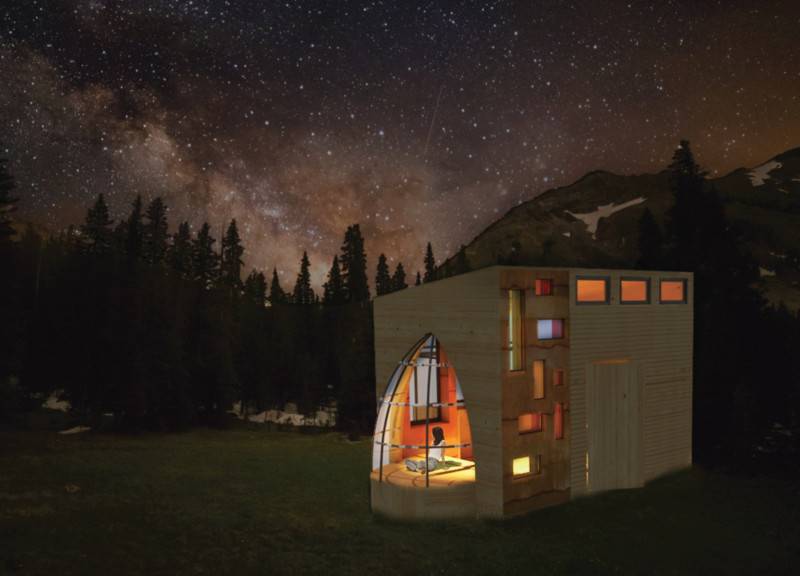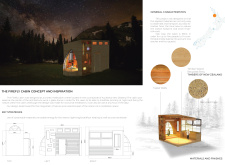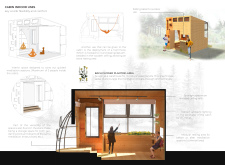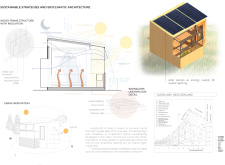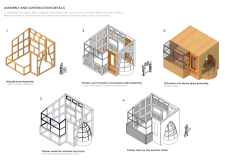5 key facts about this project
The primary design ethos of the Firefly Cabin revolves around sustainability and integration with the landscape. The architecture employs a timber frame structure that supports low environmental impact. The use of natural and recycled materials contributes to the building's overall sustainability, making it not only a meditation space but also a statement on responsible construction practices. The layout is intentionally designed to maximize natural light and views, enhancing the user's experience of tranquility.
Sustainable Materiality and Construction Techniques
One of the defining aspects of the Firefly Cabin is its choice of materials which play a crucial role in the design's sustainability and thermal performance. Recycled Rimu timber as a primary structural material not only minimizes the carbon footprint but also aligns with regional architectural traditions. The use of tapial walls affords good thermal insulation and contributes to a rustic yet contemporary aesthetic.
Additional materials such as sheep wool insulation, barnacork for underfloor heating, and lime mortar provide both functional benefits and environmental consciousness. This careful selection of materials ensures efficient heating and cooling, aligning with the bioclimatic principles that guide the project’s design. Daylight management is addressed through strategically placed recycled glass panels that blur the boundaries between interior and exterior spaces.
User Engagement and Versatility
The Firefly Cabin is designed to accommodate various activities beyond meditation, showcasing a unique versatility among architectural designs in this category. The interior features an adaptable layout that can be configured for guided meditation sessions or solo reflection practices. The inclusion of an indoor planting area dedicated to Bach flowers offers sensory engagement that enhances the meditation experience.
A notable design detail is the provision for folding outdoor furniture, which encourages interaction with the natural landscape, supporting activities such as group meditations or solitary relaxation. Rainwater collection systems are integrated into the design, further emphasizing the project's commitment to sustainable living.
Overall, the Firefly Cabin exemplifies an architectural approach that prioritizes environmental stewardship while ensuring a functional space for personal growth. Its unique combination of sustainable materials, versatile design, and engagement with the natural environment distinguishes it from typical meditation retreats.
To explore further details regarding the architectural plans, sections, and overall design principles that guide the Firefly Cabin project, a deeper investigation of the architectural ideas presented is encouraged. This examination will provide a comprehensive understanding of the project’s innovative strategies and its contextual relevance within contemporary architecture.


